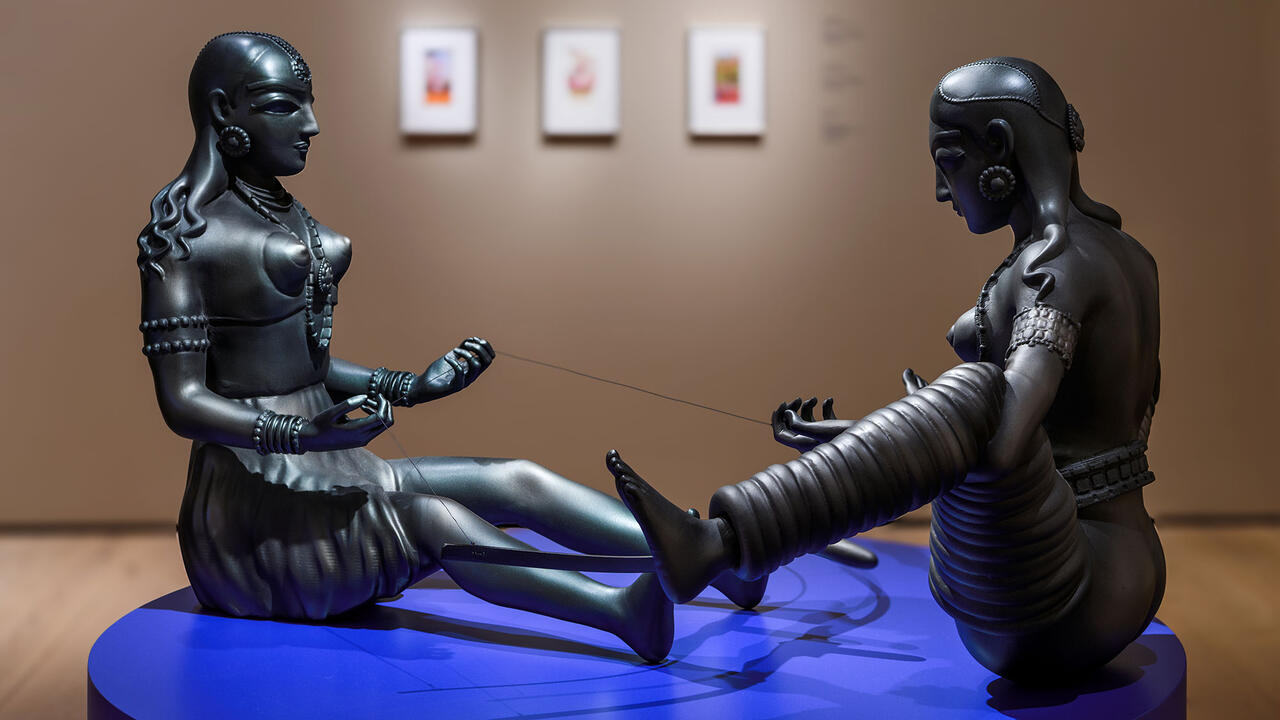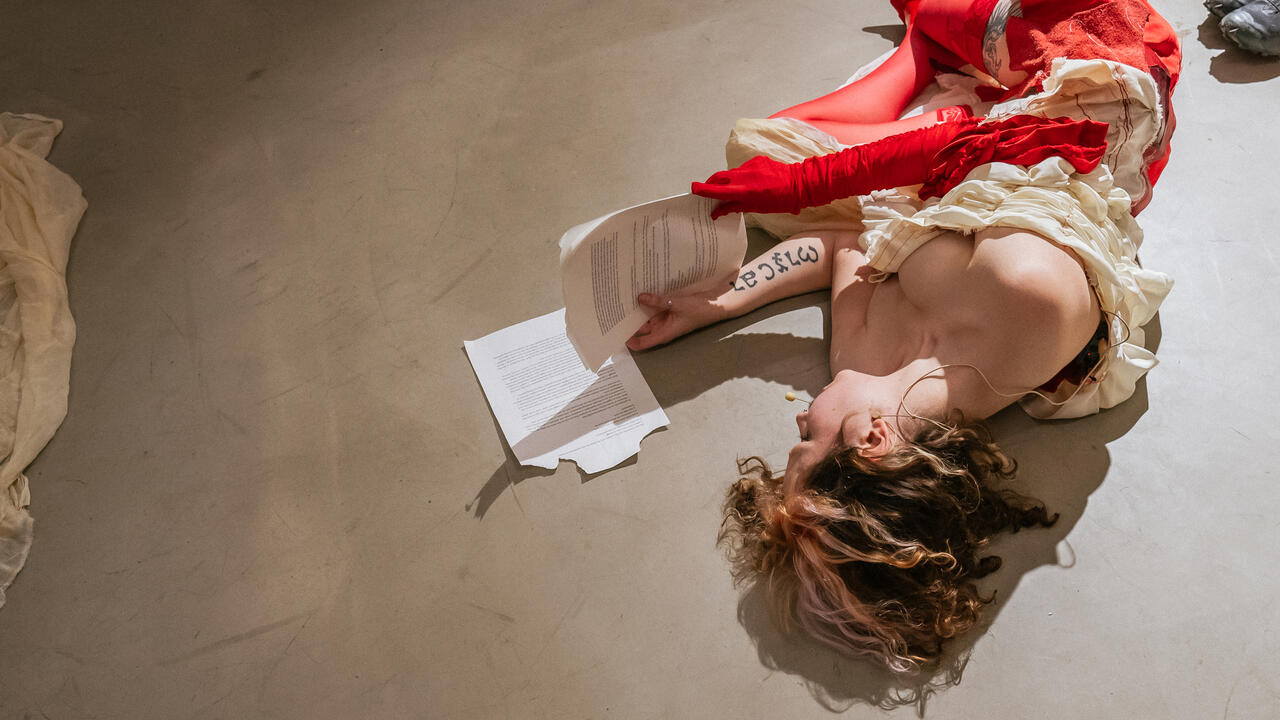Not Another Warhol Show: A Review from Tate Modern
This mini-retrospective makes a compelling case for the ongoing relevance of the 20th century’s most ubiquitous artist
This mini-retrospective makes a compelling case for the ongoing relevance of the 20th century’s most ubiquitous artist

The last time Andy Warhol featured at London’s Tate Modern was the sprawling group show ‘Pop Life: Art in a Material World’ (2009–10), which pointed an accusing finger at the American ‘business artist’ for ushering in generations of cash-counting acolytes, from Damien Hirst to Jeff Koons to Takashi Murakami.

What a difference ten years have made. If ‘Pop Life’ showcased the garishly colourful ‘worst of Warhol’, this sombre mini-retrospective is a thoughtful, even reverential rendition, displaying a serious and often black-and-white Andy. From the opening wall of stunning 1950s pencil drawings – including an exquisite Standing Male (c.1957), who exudes sensuality wearing nothing but an elegantly drawn geometric-patterned scarf – and adjacent screening of Sleep (1963), where the late poet John Giorno’s motionless, abstracted body is intimately and loving framed for more than five hours, curators Gregor Muir and Fiontán Moran (Tate) and Yilmaz Dziewior and Stephan Diederich (Museum Ludwig, Cologne) establish they’ll be re-telling the familiar Warhol story via an unconventional selection of his artistic heights. I instantly overcame my ‘not-another-Warhol show’ dread, a lump forming in my throat as I read the sad and small 1921 US-immigration passenger ledger, hung by the entrance, that records the arrival of Warhol’s mother the ‘alien […] Ula Varhola’. At the same time, down a corridor, in a distant gallery, I could glimpse the artist’s gloriously light-filled Silver Clouds (1965–66), colliding and lifting in slow motion, like angels of the space-age. (These buoyant mirror-pillows never take a bad picture, as will undoubtedly be demonstrated by countless Tate-loving Instagrammers this spring/summer.)

This isn’t just ‘queer Andy’, as some pre-opening rumours had expected; this is a smart, hyper-talented, brilliant artist, a shy outsider who overcame huge obstacles and worked light-years ahead of his time, addressing astonishingly current topics: same-sex longing, migration, race, gender performance. Series such as the exhibition highlight, the rarely seen ‘Ladies and Gentlemen’ (1975), featuring ‘black and Hispanic transvestites’ (as Bob Colacello describes the models in Holy Terror, 1990) – return now with renewed relevance, if requiring some 21st-century qualification (regarding pronoun-usage, for example, and the power imbalance between a white artist and his black and Latinx subjects). (In the spirit of this overlooked-Warhol revival, surely Extinction Rebellion will be latching onto the artist’s once-ignored ‘Endangered Species’ series [1983; not displayed here] any day now?)
In one darkened gallery the multimedia installation, the Exploding Plastic Inevitable (1966–67) is elaborately restaged; while Chelsea Girls (1969) and Velvet Underground footage remain as captivating as ever, this recreation foregrounds EPI’s spectacular strobes and coloured lights, thus highlighting Warhol’s surprising contribution to the history of music: as a pioneer (with the help of Danny Williams and others) of the rock-gig light show, still enduring today. In fact, ‘still enduring today’ could be the repeated motif of this show – Campbell’s Soup, Coca-Cola and Brillo are among the rare age-old grocery brands that continue to sell; the androgynous glamour, on the cover of a 1984 Interview magazine, of Grace Jones, will be the subject of an exhibition at Nottingham Contemporary this year.

A corridor of Warhol’s experimental 1960s publishing/curating ventures ends with a newspaper headlining his shooting, in 1968, by Valerie Solanas, then leads straight into a powerful room of bold icons: Skulls (1976), Hammer and Sickle (1976), and Mao (1972). Erased is the former narrative of pre- and post-lapsarian Warhol and his alleged long, cringey, post-shooting decline. No; this is all-of-a-piece Warhol, working full throttle for four solid decades. In the penultimate gallery, Statue of Liberty (1986) depicts the American national symbol of welcome overlaid with military camouflage, echoing his mother’s foreign-passenger listing at the show’s entrance. (Curiously, Lady Liberty is also the subject of Steve McQueen’s film Static, 2009, which opens that artist’s demi-retrospective, simultaneously on view at Tate Modern.) Together these seem to hint accusingly at today’s selective US-entry policies, which might not have welcomed this man from a low-income immigrant family who has since toppled Pablo Picasso – as Blake Gopnik’s fat new biography asserts – as the towering 20th-century artist.

The Warhol universe is so vast and voluminous, any direction a curator points their telescope will yield a plausible picture. This year’s Andy is an intelligent, reflective figure whose expansive multi-media art-making and queered worldview has only increased in significance. The final black-and-white Sixty Last Suppers (made in 1986, not long before he died), complete the birth-to death arc. This repeated silkscreen of Leonardo’s world-famous interior – the rarest of Warhol’s genres, otherwise appearing in his adult oeuvre only in the Electric Chairs (1962-67) which, oddly, are entirely missing here – has seemingly lost its religiosity. Just as the Most Wanted Men (1964), seen earlier in the show, transformed an unlikely image-source into a sly portrait of male longing, queer artist Leonardo Da Vinci’s Last Supper has here become simply a timeless and beautiful image of 13 men, animatedly conversing and sharing a meal.
‘Andy Warhol’ runs at Tate Modern until 6 September 2020.
Main Image: Andy Warhol, Sixty Last Suppers, 1986, exhibition view, ‘Andy Warhol’ , 2020, Tate Modern, London. Courtesy: the artist and Nicola Erni Collection © 2020 The Andy Warhol Foundation for the Visual Arts, Inc. and DACS, London.





















